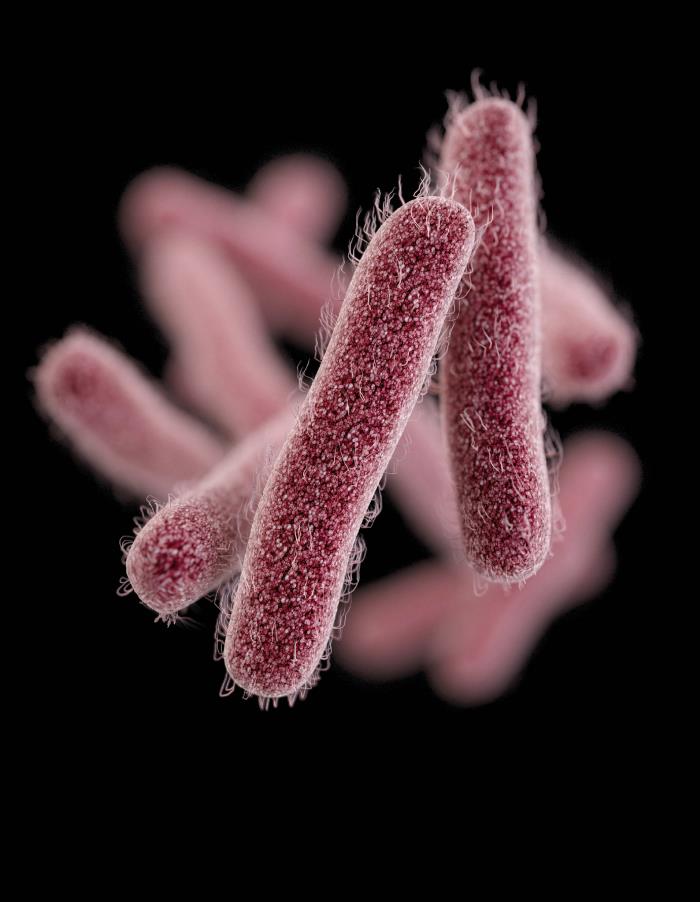The Centers for Disease Control and Prevention (CDC) released a health advisory Tuesday describing the identification of emerging Shigella strains with elevated minimum inhibitory concentration values for ciprofloxacin and outlines new recommendations for clinical diagnosis, management, and reporting, as well as new recommendations for laboratories and public health officials.

Current interpretive criteria provided by the Clinical and Laboratory Standards Institute (CLSI) categorize these strains as susceptible to ciprofloxacin, which is a fluoroquinolone antibiotic and a key agent in the management of Shigella infections.
However, recent data from the Centers for Disease Control and Prevention (CDC) and state and local public health partners show that these strains often have a quinolone resistance gene that may lead to clinically significant reduced susceptibility to fluoroquinolone antibiotics. Clinicians treating patients with multidrug-resistant shigellosis for whom antibiotic treatment is indicated should avoid prescribing fluoroquinolones if the ciprofloxacin MIC is 0.12 μg/mL or higher even if the laboratory report identifies the isolate as susceptible, and should work closely with their clinical microbiology laboratory and infectious disease specialists to determine appropriate antimicrobial therapy.
Shigellosis is a nationally notifiable condition, and all cases of shigellosis should be reported to local health departments.
Background
CDC has identified an increase in Shigella isolates in the United States with minimum inhibitory concentration (MIC) values of 0.12–1 μg/mL for the fluoroquinolone antibiotic ciprofloxacin. Preliminary data suggest that all Shigella isolates with ciprofloxacin MICs in this range for which results are available harbor at least one quinolone resistance gene known to confer reduced susceptibility in enteric bacteria. Shigella isolates without a quinolone resistance gene typically have a ciprofloxacin MIC of ≤0.015 μg/mL. Current CLSI criteria categorize Shigella isolates with a ciprofloxacin MIC of ≤1 μg/mL as susceptible to ciprofloxacin (1).
CDC does not yet know whether fluoroquinolone treatment of a Shigella infection with a ciprofloxacin MIC of 0.12–1 μg/mL is associated with a worse clinical outcome for the patient or if such treatment increases the risk of transmission to other individuals. In Salmonella isolates, ciprofloxacin MICs of 0.12–1 μg/mL have been associated with reduced susceptibility, prolonged clinical illness, and treatment failures and are now categorized by CLSI as intermediate or resistant to ciprofloxacin in Salmonella species.
Fluoroquinolone resistance is of particular concern given that data from the National Antimicrobial Resistance Monitoring System indicate that many Shigella isolates with a quinolone resistance gene also are resistant to many other commonly used treatment agents, such as azithromycin, trimethoprim-sulfamethoxazole, amoxicillin-clavulanic acid, and ampicillin. This susceptibility profile may encourage clinicians to prescribe fluoroquinolone antibiotics to patients who require treatment.
Rising fluoroquinolone MIC values among Shigella isolates may be related to the emergence of plasmid-mediated quinolone resistance (PMQR) genes in Shigella species in the United States. Shigella strains harboring PMQR genes were identified earlier this year following whole genome sequencing of isolates from a multistate outbreak of multidrug-resistant Shigella flexneri infections predominantly affecting adult men, many of whom identify as men who have sex with men, according to epidemiologic data collected by CDC’s Shigella program as part of outbreak response. PMQR genes have also been identified in sporadic cases of Shigella sonnei. Plasmid-mediated resistance genes are of particular concern because of their ability to spread between bacteria and their ability to promote chromosomal mutations conferring quinolone resistance, potentially resulting in rapid spread of fluoroquinolone resistance within or between populations of bacteria. The prevalence of PMQR genes among all U.S. Shigella isolates is currently unknown.
Any patient with a Shigella infection could carry a strain harboring a quinolone resistance gene with a ciprofloxacin MIC of 0.12–1 μg/mL.
Read more at CDC


One thought on “CDC issues Shigella health advisory”